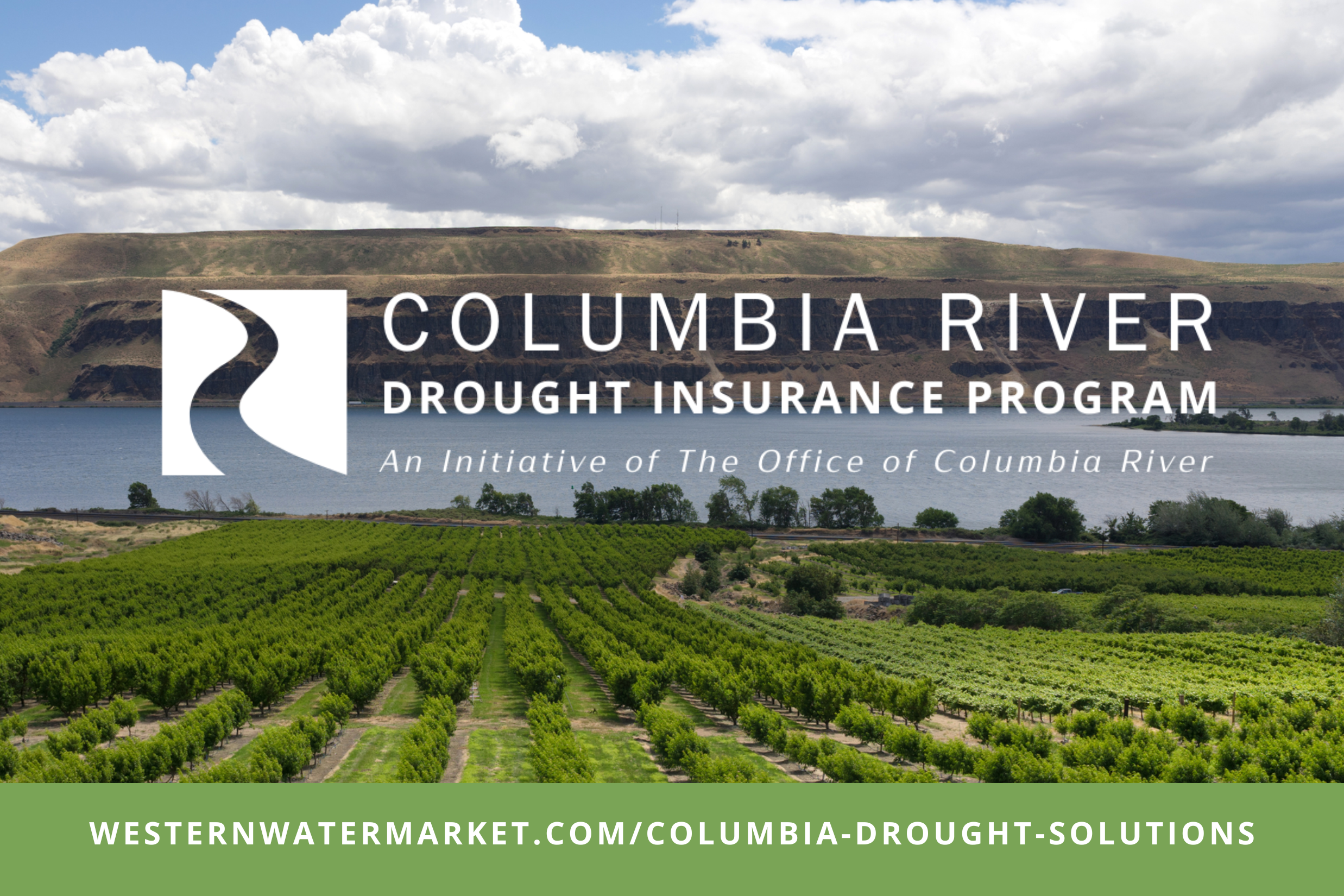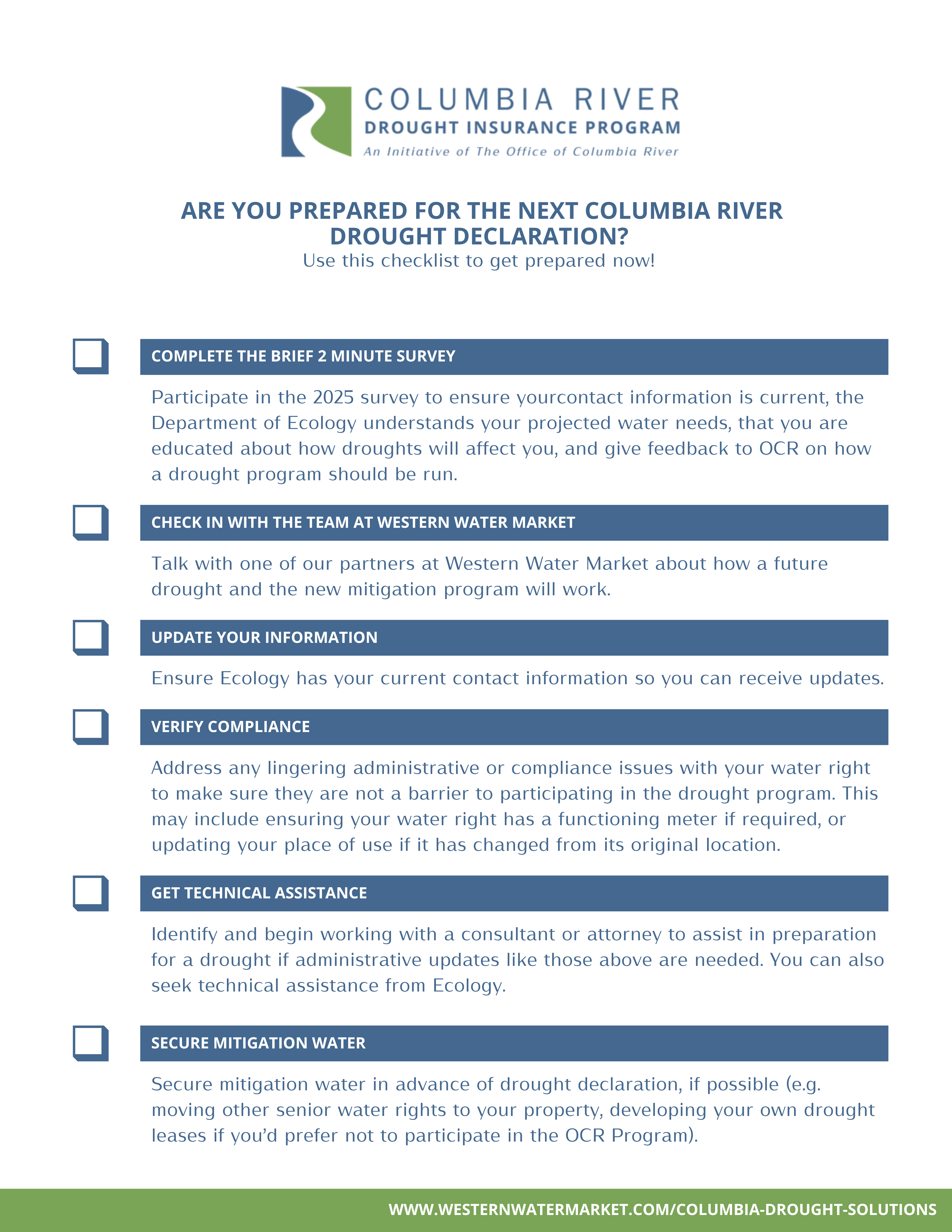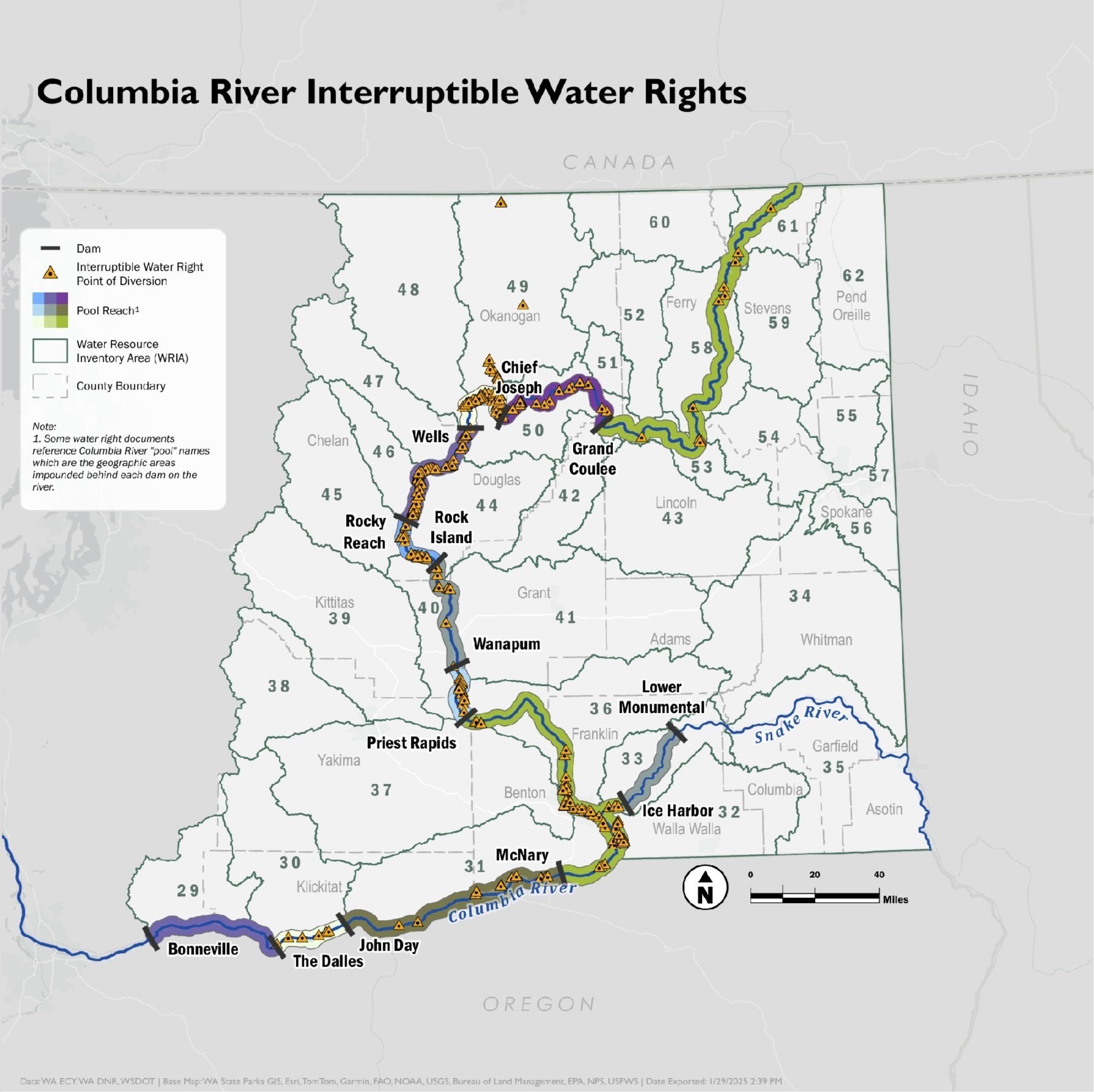Historically, Columbia River droughts haven’t come around often, happening about once every two decades. The last was in 2001 and was the second worst in state-recorded history. However, with hot, dry seasons becoming more common and more intense, the next one may be closer than we’d like.
When droughts in the Columbia River happen, users with a junior water right, also known as an interruptible water right, would have water shut off to maintain enough water in the river for fish and senior water rights. We have a plan to prevent shutoffs, but we need help from Columbia River water right holders.
Columbia River drought: sooner rather than later
You may have heard recently that the state declared a drought emergency in the Yakima Basin. While continued dry conditions are seriously impacting agriculture and fish along the Yakima River, there is some good news for other parts of eastern Washington: the Columbia River itself is not experiencing a drought in 2025.
The mainstem Columbia River has its own definition of drought conditions. It’s different from the statewide criteria, which defines drought as less than 75% of normal water supply.
On March 1 this year, the Northwest River Forecast Center estimated that the Columbia’s April to September runoff at the Dalles Dam will be 79 million acre-feet, which is well above the 60-million-ac-ft threshold to meet drought conditions.
This may come as a relief if you’re a Columbia Basin water right holder, but it doesn’t mean you’re in the clear. Your water supply may still be at risk in the future.
What you need to do to avoid shutoffs
We are launching a new effort, the Columbia River Drought Insurance Program, to get water to curtailed irrigators during the next Columbia River drought. Through this program, junior water right holders can lease water in drought years to avoid being entirely shut off.
That leased water could come from Lake Roosevelt, behind Grand Coulee Dam, with up to 33,000 ac-ft to draw from. We are also purchasing additional water rights and entering into lease agreements to make even more water available.
Click to enlarge
As a first step, we are partnering with Western Water Market to reach out to Columbia River interruptible water right holders. We want to ensure your contact information is up to date, learn more about your drought-year needs and interests, and answer any questions you may have.
If you have an interruptible water right along the Columbia River (or if you aren’t sure), complete this short survey to update your contact information and tell us about your water supply situation.
Your input helps ensure that this new program effectively serves you – getting you the water you need – during the next Columbia River drought. With your help, impacts of the next drought will be much less severe than the last because we will have solutions and water supplies that did not exist previously.
You can also follow the steps in our drought preparedness checklist so you are ready when the time comes.
How do I know if I would be curtailed?
Junior water right holders along the Columbia River – represented by the yellow triangles on the map – would be shut off during the next drought. Complete our survey to help prevent this from happening. Click to enlarge.
You are eligible for this program if you have an interruptible water right along the Columbia or lower Snake rivers. This includes water users on the Columbia River, nearby tributaries, and groundwater close to the river who received their water right in 1980 or later.
We’re here to help! We don’t want you to get shut off if we can prevent it. The 2001 drought cost Washington billions in hydropower and raised electricity rates statewide, not to mention the irreparable damage to regional agriculture.
Fill out the survey, complete the checklist, or get in touch to ensure you are prepared for when – not if – the next Columbia River drought happens.


.png)


